
Various aspects of cryptocurrency use have been banned in China numerous times over the better part of the last decade. The most stringent barriers yet, though, were announced on Friday, September 24th. In a series of statements, Chinese economic planners listed their edicts in stepwise fashion, including
- no financial supports or subsidies for crypto mining firms or activities
- a prohibition on miner participation in energy credit markets
- stricter energy controls for crypto miners
- an order for current holders of crypto to eliminate exposure to crypto-related speculative risk
- a reiteration that crypto-related activities are illegal
- a ban on all overseas crypto companies from serving Chinese investors
- and finally, harsh new punishments and penalties to be introduced to enforce
Predictably, the price of the entire crypto complex declined in the wake of the news; and then, with equal predictability, most of the earlier losses were recovered. None of this is new territory for Bitcoin or any of the other coins and assets in the sector, for which in conventional media coverage there are always more negative than positive headlines and articles.
By one account Bitcoin has been declared dead no less than 430 times since 2010; over 35 times this year alone.
Bitcoin price (June 2021 – present)
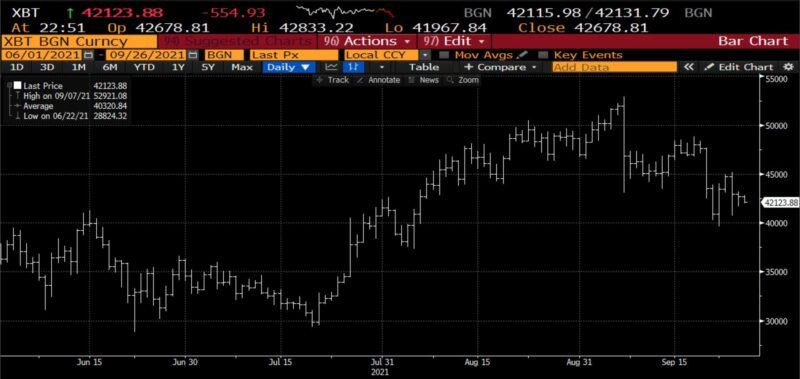
Among others, Chinese government officials lobbed measures against Bitcoin in September 2013 (prohibiting banks from engaging in crypto-related transactions); in September 2017 (moving to shut down exchanges in Beijing and banning initial coin offerings); in February 2018 (terminating the operation of foreign exchanges); and in June 2021 (targeting 90% of the mining capacity in Chinese-based mining operations); and the current, more sweeping initiative.
In 2017, China’s anti-crypto decrees sent Bitcoin’s price plummeting roughly 30%. On Friday, in the face of a vastly broader and more severe raft of restrictions, Bitcoin’s price fell 5%.
Bitcoin price (September 2013 – present)
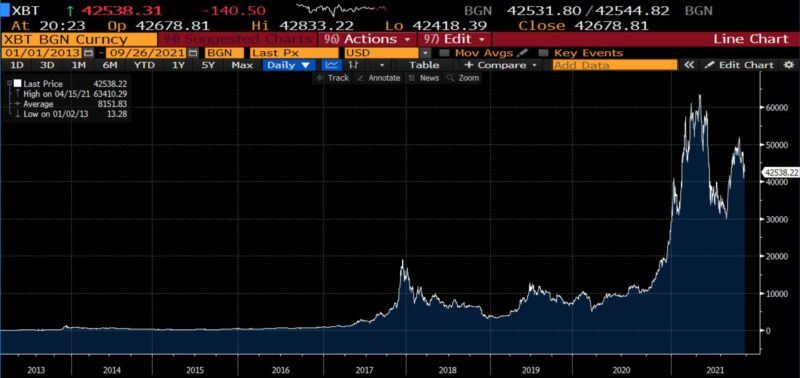
In light of both its history and the decentralized nature of crypto, it’s difficult to see this latest ban as anything but terrifically bullish for the development of the sector as a whole. It forces miners located in China taking advantage of cheap development and energy costs to move elsewhere, likely resulting in greater geographic diversification. (The concentration of hashing power in China-based mining facilities was seen as an existential vulnerability to Bitcoin by some observers; yet for several months an exodus of mining operations has been underway.) The crackdown will likely induce more research into energy-efficient means of mining. And there will undoubtedly be increased innovation directed at the concealment of ‘on and off ramps.’
If this were the America of Coolidge, the Chinese ban would be met by the introduction of special crypto economic zones or another market-oriented ideological ballast. Unfortunately, American politicians and regulators today are not intellectually contrary so much as slower and more methodological than their Chinese counterparts.
USDCNY spot exchange rate (dollars per yuan, 2011 – present)
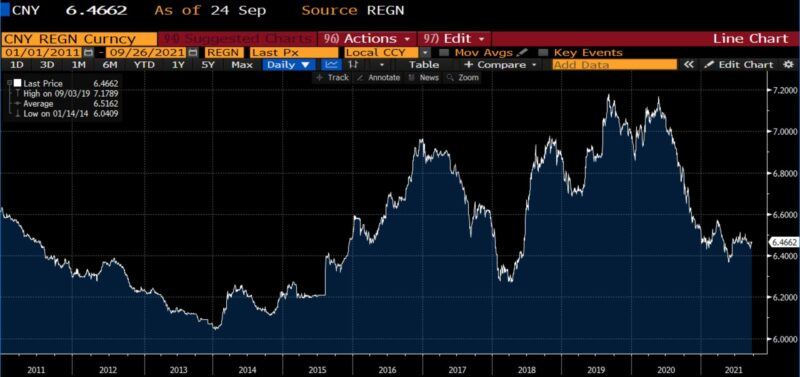
The comprehensiveness of the most recent Chinese diktat comes at what increasingly appears to be a pivotal moment. Less than one month ago, El Salvador adopted Bitcoin as its legal tender; a bold (but flawed) step which may nevertheless be instructive for other nations. Also, the national rollout of China’s digital yuan, a first in several ways, proceeds. While it is a central bank digital currency (CBDC) and not a cryptocurrency, the most recent crypto interdiction may be an attempt to hamstring a rival where transactions and cross-border trade are concerned.
And it is from the perspective of timing that the most sardonic observation pertaining to the new prohibitions can be made.
At the same time that anti-crypto decrees are being promulgated, a former exemplar of conventional Chinese commerce is rapidly approaching a debt default, hasty restructuring, or government bailout. Drowning in $300 billion of debt, the situation facing the Evergrande Group has been compared to that which confronted Lehman Brothers in 2008. It’s a largely inapt comparison, with one exception: both collapsed after years under the watchful eye of regulators and government officials, in long-established markets, with the protection of investors assured all along.
Evergrande 8.25% 3/23/22 bond price (2021)
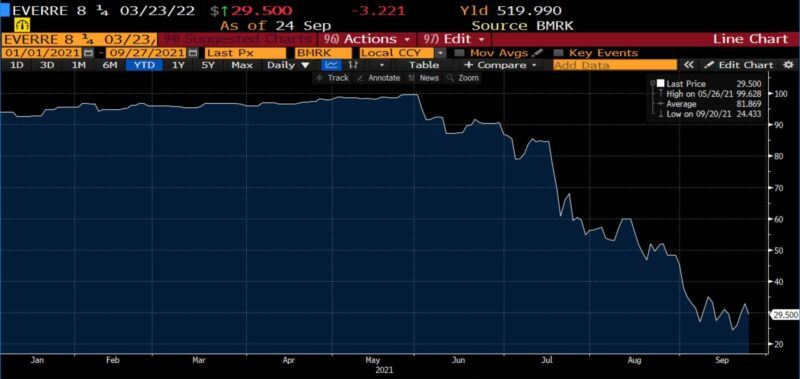
The company owes money to over 170 banks and another 121 financial institutions. But Evergrande is only the proverbial canary in a $52 trillion mine: a massive, credit-fueled real estate bubble rife with malinvestment. Chinese economic managers are likely to decide that more liquidity is required to stave off a massive financial implosion. Indeed, the People’s Bank of China injected $17 billion on September 23rd alone to unfreeze fearful interbank lending markets.
Evergrande stock price (2021)
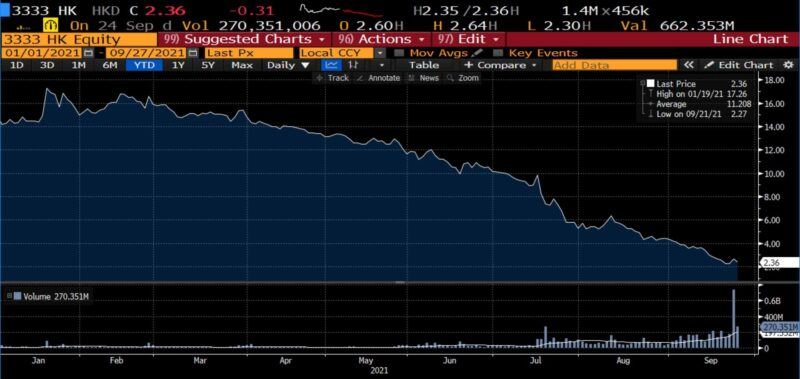
It is certainly true that non-fiat currencies, such as those which are commodity-backed or algorithmically-limited, cannot and will not prevent unwise investments or entrepreneurial misjudgement. But with the Evergrande crisis looming in the background, the crypto universe being pilloried by Chinese authorities as a “growing threat to financial stability” and “disrupt[ive] to economic order” is more than simply ironic. It is irony at its most mordant.
* This article was originally published here
HELP STOP THE SPREAD OF FAKE NEWS!
SHARE our articles and like our Facebook page and follow us on Twitter!



0 Comments